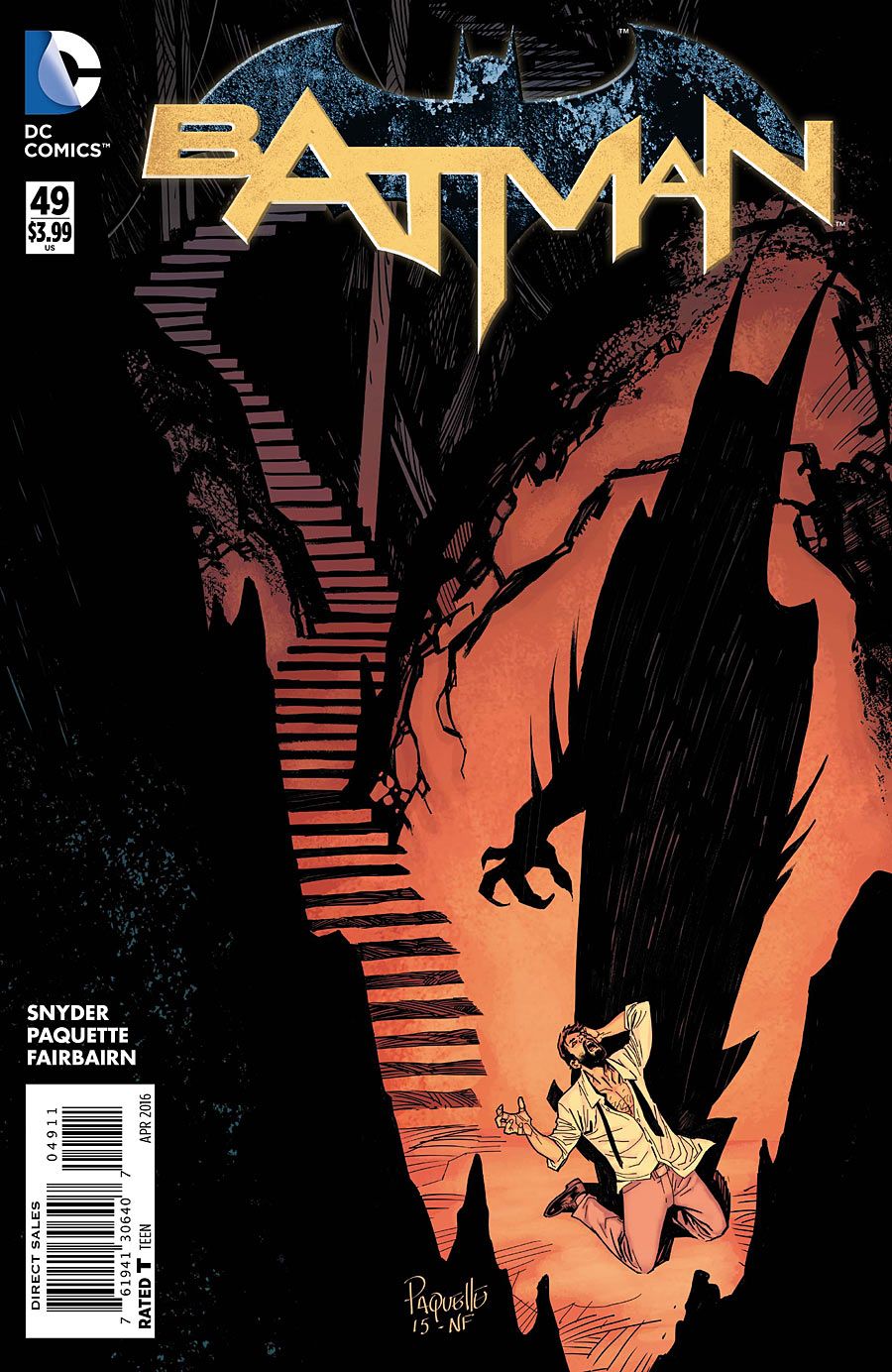As Gotham crumbles, Bruce Wayne asks Alfred to make the hardest decision of his life in Scott Snyder, James Tynion IV and Yanick Paquette's gut-wrenching "Batman" #49, where Bruce sacrifices himself to bring the Batman back to life.
We all knew Jim Gordon's time in the suit was a ticking clock. Though these things always run on borrowed time, the "when"s and "how"s are the fun part; it's the journey, not the destination. As a side effect of Jim's time as Gotham's protector, we as readers have had the opportunity to actually meet Bruce Wayne for the first time, and it seems both Snyder and Alfred subscribe to the same theory I do: that Wayne is an affectation put on by Batman.
Before "Superheavy," what did anyone really know about Bruce Wayne beyond bullet points? What did he even know about himself? Snyder gave us a real Bruce Wayne for maybe the first time in Prime DC Continuity. What we learned is that -- even without the tragedy in his heart -- he is still a great man. Determined. Focused. Self-sacrificing.
It's heart rending to watch Alfred Pennyworth do what any father would: sacrifice the world for another day of his child's happiness. He knows the most difficult secret of the Batman: there isn't room in a mind for Batman and another person. There is only room for the Batman.
As Alfred pleads his case, Snyder and Tynion infuse his dialogue with sincerity and pain and fear and Paquette strains the Wayne family caretaker's face to near mania, so that we know it's all a lost cause. We as readers demand it. Gotham demands it.
Snyder and Tynion give Paquette a story to draw that extends generations. A subplot from long ago -- the idea Batman is looking to create clones of himself so there will always be a Batman -- returns to the fore this issue. We see many different iterations of the Bat. It's the other side of the coin, though. These Batmen are refined from the prototype and imbued with the sacrifice of Bruce Wayne in them, but Batman always comes with a hefty price.
For some, the cost is their lives. Others, it's the world. It works some times; others, it does not. Paquette lays out these side quests in gorgeous, trippy double-page spreads, set above a starry background in a great callback to the artist's time on "Batman, Inc." with Grant Morrison. However, these are Batmen infused with hope, ones who embrace the sun and not the darkness.
Snyder and Tynion's own high-minded ideas are silly, but there is so much emotion invested in the scene that it practically powers the gadgets themselves. Backups of Batman's personality. A giant Frankenstein electroshock ball, hanging from the ceiling of the cave. Big Wheel Batman. The pieces fit because the writing team has earned the right to go as weird as they want.
Alfred has always found use in keeping Batman safe, like a parent overseeing their child. However, he can't stop Batman from doing what he was made to do. He got one thing that was always denied him: the happiness of the man he feels is his son. They had it. Bruce found purpose in a real, honest life, not a series of checkmarks on a personality test. He found love in Julie Madison, who truly loves him so much she will let him go.
Here, Alfred was forced to watch as the things he loved the most about his son all culminate in the inevitable sacrifice. Bruce is a good man, willing to do what it takes to make the lives of those around him better. Bruce Wayne is the role model.
Though Batman claims that he would never take a life, he did so in his creation. In order for Batman to live, Bruce Wayne must always die. That's the trick.
Batman is a bad role model. He's a tumor, metastasizing itself inside the soul of Bruce Wayne until it consumed him whole. Paquette gives us all we need to know in the final panel: that side eyed, heavy-lidded look, returned only a few seconds yet already exhausted by the enormity of his task.
The Batman is back, and all it cost us was the life of Bruce Wayne.
Bruce is dead. Long live the Batman.

